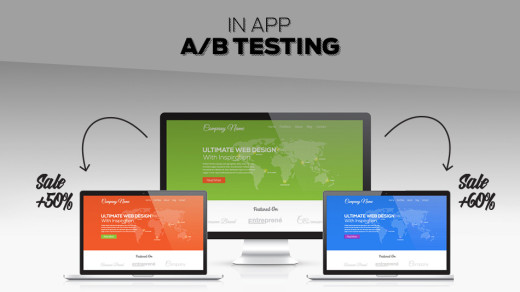
The ever-increasing competition on the web has forced marketers to be more creative in their content marketing endeavors than ever before in order to drive conversions. In fact, conversion optimization has now become a must. Conversion rate optimization is one of the most crucial aspects of modern-day content marketing technology.
The Venture Beat report revealed that only two out of 36 companies failed to generate substantial ROI with conversion optimization. And only five percent of the 2,938 marketers surveyed were not able to generate ROI with conversion optimization. The report further revealed that 173 of the marketers surveyed were able to achieve ROI of over 1,000 percent. Given these statistics, it’s no wonder that more and more companies are preparing to spend a considerable fortune on conversion optimization.
But conversion rate optimization is easier said than done. Here are five reasons why:
- Most websites don’t have a massive traffic problem; however, every website in the world has a conversion problem.
- Conversion rates typically range from a mere one to three percent.
- Most companies spend $92 to acquire customers but only $1 to convert them.
- Only about 22 percent of businesses are satisfied with their conversion rates.
- 85 percent of marketers plan to focus more on conversion rate optimization this year.
A variety of sources available on online media suggest that it’s more difficult than ever for marketers to improve their conversion rates. So, how will you ensure that your strategies make you stand out from the crowd and help you score a higher conversion rate? The answer is simple! You’ll need to embrace the trends of tomorrow to stay ahead in the game. Here, we present to you 7 innovative, upcoming conversion rate optimization trends to help you deliver maximum value and minimize the impact of the ever-changing and demanding market:
1. In-app A/B testing

No matter what you need – shopping, dating, socializing, or even reading – there’s already an app available for that. No wonder! When mobile browsing began to climb in popularity, many businesses rushed to capitalize on the craze, shelling out money to develop personalized and task-oriented apps in order to tap into the app-driven future of the biz world. And that realization is pushing a lot of marketers and businesses to continuously run in-app A/B tests and push different interface options to increase their conversion rate manifold.
In fact, the trend of in-app testing has already become a fad, and as of Q4 2015, a number of businesses have experimented with in-app testing to increase conversion opportunities. Take the example of Nitro. The popular PDF creating, editing, and sharing software platform was able to increase its daily conversions by 88 percent.
Still not convinced? Here are 5 statistics that will make you embrace in-app A/B testing wholeheartedly in 2016:
- Mobile apps account for 52 percent of all time spent on online digital media.
- Users spend 89 percent of mobile time using apps.
- 42 percent of all mobile sales generated by the leading 500 merchants come from mobile apps.
- A/B testing is the most used method for improving conversion optimization.
- Only one out of 8 A/B tests have driven significant change.
Conversion is the highest leverage point for any app-based business. And we predict that in-app A/B testing will continue to make waves in 2016, too, and it’s no wonder why. Remember, you’re constantly faced with the challenge of getting lost in the overly populated world of apps. So, change your CTA buttons, introduce a customized background, or better yet, change the color theme. Here are 3 suggestions to help you multiply your conversions in 2016:
- Get Insights – Rather than randomly testing this and that to optimize your conversions, it’s better to get qualitative insights to understand what your customers like, what they don’t like, which features they use, and who your customers are. Then, basis the data, chalk out a plan, and test elements that will have the biggest impact.
- Monitor performance – Measuring in-app analytics baffles most newbie entrepreneurs, but it’s essential to set a goal for your tests and measure your performance accordingly. So, compare open rates, click-through rates, conversions, and more.
- Continuously improve – Nothing is ever perfect. While there can be only one winner for each test, there’s no limit to the number of tests you can run. It’s a good practice to constantly improve upon the winning variants of past tests by running new tests. Always be testing.
If you’re wondering where to find handy tools and resources to test features of your app, don’t worry, we’ve got you covered. Culled from blog.kissmetrics.com, here’s a list of 3 of the most popular options:
- Amazon A/B testing – This tool is available for free. With its ability to limit the sample size and set complex criteria, this tool helps you run in-app tests rather easily and conveniently. Amazon A/B testing works on iOS and Android.
- Appsee – Appsee is yet another popular testing tool for in-app testing. It allows you to track exactly what your visitors are doing and where exactly your users are spending most of their time on your app. Equipped with this information, you can decide on a more effective placement of your CTAs. Appsee provides a free trial.
- Arise – Over the years, Arise has become one of the most preferred in-app testing tools for various marketers across the globe. It helps you analyze in-app purchases, new account creations, and improved CTR on ads. The basic version of Arise is available at $0.
No matter which testing platform you use, ensure that everything – from the content to the design – comes together in a way that makes your customers and prospects want to know more about your brand and then stay.
2. Mobile optimization

Here are 5 statistics regarding mobile devices and usage:
- There are 3.65 billion unique global mobile users.
- Over 1.2 billion people use mobile devices to access the web, and no one screen size has more than 20 percent of the market share.
- 34 percent of buyers use their mobile devices for product searches.
- 61 percent of buyers form better opinions about brands that offer a great mobile experience.
- Four out of five consumers use smartphones to shop.
Given these facts, it’s not rocket science to understand that a mobile version of your site would give you unlimited opportunities to convert strangers into paying customers. And, it’s not surprising that a number of brands went mobile last year. We’re going to see more of the same in the year ahead. With the substantial increase in mobile and tablet usage, an increasingly large number of consumers now want and essentially demand better user experiences on these devices. It means that, soon, mobile optimization will be the norm, rather than the exception.
Mobile conversion optimization is important to ensure that visitors to your site get the best possible experience, no matter which device they use. Remember, visitors who have better experiences are the easiest to convert. So, how would you ensure an optimal customer-site connection for higher conversions in 2016? Here are three key things you must do to optimize your mobile site for greater conversions:
- Deliver faster load time – In most countries, the cellular data networks are much slower than wired network connections. Reports suggest that slower network speed is the prime reason for the ever-increasing cart abandonment rates. In fact, Usabilla.com says that nearly 50 percent of users expect a site to load within two seconds or less, and they abandon a site if the load time is more than three seconds. Therefore, preload information that most users ask for so they won’t have to wait for the network. Cleverly use animated buttons and other elements to mask short network delays.
- Provide easy visibility – The screen sizes for mobile devices are much smaller than those for personal computers. So, ensure visually appealing content to make your mobile site look inviting. Make sure to use mobile-friendly images and choose fonts that are easy to read.
- Avoid image carousels – Experts say that image carousels discourage visitors because they either slide too fast or are too small for the visitors to see navicons. So, it’s better to avoid using image carousels, if possible. Use single messages instead. After all, it’s better to cash in on a single offer than confuse customers with a variety of different promotions.
But, before you implement these tips to optimize your mobile site, remember 3 vital points:
- Find the best keywords for your business using Google AdWords mobile search, and optimize your mobile content accordingly.
- Properly resize your images and content and remove duplicate content and error pages.
- Test your mobile site on multiple browsers and devices to ensure that it is mobile-friendly.
There are a host of useful resources and tools available on the Internet to help you with mobile optimization. Some of the most notable ones are goMobi, Moz, YoMobi, and DudaMobile. If you still haven’t optimized your mobile site, now’s the time. Go for it. Remember, it’s never too late to bring your mobile site back on conversion track.
3. Marketing automation

The ever-changing dynamics of the market have changed the name of the game for marketers. Today, an increasing number of marketers swear by marketing automation to drive traffic to their websites, convert that traffic into leads, and close those leads into customers. Last year, marketing automation was a big hit. The popularity was spurred on by Fortune 500 companies that embraced marketing automation. Here are some statistics that reveal marketing automation will continue to make waves in the coming year:
- Monthly Google searches for the term “marketing automation” have increased by 22 percent, from an average of 12,100 in February 2014 to 14,800 in January 2015.
- 79 percent of top-performing companies have been using marketing automation for two or more years.
- 63 percent of marketers plan to increase their marketing automation budget.
- 41 percent of marketers believe that marketing automation is very effective.
- Companies using marketing automation see 53 percent higher conversion rates.
Now, you understand that marketing automation is great. But, it’s easier said than done. Don’t believe us, check out these statistics:
- 76 percent of business leaders list lead generation as the biggest marketing automation challenge.
- 44 percent of marketers are not fully satisfied with their marketing automation systems.
- 85 percent of B2B marketers using marketing automation feel they’re not using it to its full potential.
Now, given these data points, you understand that marketing automation is too complex and too daunting a process. So, how can you effectively embrace marketing automation and cope with the ever-changing dynamics of the market and stay ahead of the curve? Simple! Here’s a 3-point strategy to successfully use marketing automation and facilitate conversion in 2016:
- Make a goal – Before you start using marketing automation software, define the goals you are looking to accomplish with it. Also, set a budget for accomplishing your goals.
- Pick the right automation solution – Once you’ve identified your goals and set a budget, pick the marketing automation software solution that best suits your budget and requirements. Check out the set of features, ease of use, support, and pricing. If you’re looking for the best platforms to automate repetitive tasks, reduce human error, manage complexity, and measure and optimize your efforts, here are 3 of the best marketing automation platforms:
- HubSpot – One of the pioneers in automated marketing. It helps you transform your marketing efforts into lead generation and ultimately conversion.
- Marketo – The leading cloud-based marketing automation software that helps you drive traffic, nurture leads, and boost conversions. Marketo provides a free trial to use its automation platform.
- Oracle Eloqua – Another popular marketing automation platform that allows marketers to plan and execute marketing campaigns and build and sustain consumers through personalized experience.
- Start with micro-campaigns – Remember, Rome wasn’t built in a day. So begin with small campaigns targeting your prospects and customers. Offer valuable educational content and information. This will make your customers want to know more about your brand and look for products and services that you offer.
4. Personalization

Here are five statistics regarding personalization of web experiences, CTAs, content, emails and buying recommendations:
- Marketers see an average 20 percent increase in sales when using personalized web experiences.
- Personalized CTAs result in a 42 percent higher conversion rate than generic CTAs.
- 52 percent of marketers see content personalization as critical to their digital strategies.
- Personalized emails improve click-through rates by 14 percent and conversion rates by 10 percent.
- 56 percent of online buyers prefer to shop on sites that provide personalized recommendations.
With as many websites as there are now, it’s no longer enough to have an online presence. You’ve got to battle it out with other sites. The rule of this game is simple: you’ve got to get – and hold – the attention of your target audience. And, you’ve got to hold their attention until they’ve paid you for your product or service.
What do you think will set your site apart from others? In a word, personalization. But what’s personalization? It is an effective way to present your content so that it speaks to your target market and resonates with them. Then, when they look at the design, it’s their experience, their voice, and their taste that they see.
With the way things are going, personalization is likely to continue to dominate the conversion optimization trends for a few more years. In a blog post published at Crazy Egg, Jeremy Page reveals that 52 percent of online marketers agree that the ability to personalize content is fundamental to their online or blogging strategy.
But personalization isn’t that easy, and marketers are faced with several technological and strategic challenges when it comes to personalization. Here are some statistics that reveal how challenging personalization is:
- 60 percent of marketers struggle to personalize content in real-time.
- The complexity of systems, access to real-time data, and data privacy remain the biggest challenges of personalization.
- Only 32 percent of marketers are able to explore the advantages of personalization.
Here’s are three ideas that will help you personalize experiences for your readers:
- Personalize emails – Recently, a number of articles on the web revealed how social media and instant messaging not only murdered email marketing but also danced on its grave. People even went about mourning the death of email marketing. But, contrary to what people have been talking about, email isn’t going anywhere, not this instant or anytime soon. In fact, email marketing is believed to be three times more effective for conversion than social media. So, here are a few things you must do to stay ahead in the game:
- Segmentation – A blog post published on Designhill reveals that segmentation is the process of personalization by breaking up content into small parts to ensure that you’re sending the right email to each individual customer, conforming to their interests or needs. Use recipients’ real names in email messages.
- Automated behavioral trigger – HubSpot reveals that automated behavioral trigger emails help you understand how your customers are using your product. The site further reveals that trigger emails offer 152 percent higher open rates. It makes sense to automate trigger emails to up-sell and cross-sell, welcome a new member, and retarget.
- Mobile-friendly – In Q1 2015, around 66 percent of emails were opened on smartphones and tablets. Quite expectedly, you need to optimize your email designs to work well, irrespective of the changing screen sizes. It is advisable to keep the width of emails at 500 pixels, headlines at 22 pixels, and body copy at a minimum of 14 pixels. In addition, leave a lot of cell padding around CTA buttons.
- Use dynamic pricing and images – Another staple of 2015 that is likely to continue to be a big hit in 2016 is dynamic images and pricing. Dynamic pricing is the technology-based pricing system that prices a product depending on current market conditions. Traditionally used by airlines and large enterprises, dynamic pricing is helping small businesses and startups maximize their sales. Similarly, dynamic images are interactive product images that show the product in action, offering visitors a real-time experience of the product.
- Create Location-Specific Content – Every time a visitor visits your site, they provide information about their location and demographics. Use this information to create personalized content relevant to the location of the visitor. If you’re an e-commerce business, you may provide local deals, and if you’re an article-based site, you may provide news from around the user’s location. By providing personalized content based on the user’s location, you’ll be able to build trust in your business, which eventually translates to conversion.
5. Cross-platform testing

Cross-platform testing is yet another trend that’s here to stay! Cross-platform testing is the process of testing the suitability of your content, design, and other elements across various platforms. Given the rise of mobile, smartphone, tablets, and laptop use, it’s easy to see why cross-platform testing has now become more popular than ever.
Remember, you’re putting in a lot of time, effort, and money to increase online performance. But, only increasing online presence won’t help you. You also need presence that attracts interest and that is compelling enough to keep audiences. That’s why it’s necessary to test your online presence across different platforms and devices. By doing so, you can deliver tested UI/UX without having to differentiate between web and mobile.
Here are three suggestions for exploring the full potential of cross-platform testing to improve upon your conversion rate in the coming year:
- Know what your users want – It makes sense to learn about your target audience! Understanding user behavior and patterns will help you decide which devices/platforms you will need to make your app/website available on.
- Conform to the UI/UX guidelines – Understand each platform separately and read the respective guidelines before conducting cross-platform testing. Getting acquainted with the behaviors and visual aspects of different platforms will help you understand how to maneuver core functionalities and elements for different platforms.
- Test frequently – Testing your app/site frequently is extremely crucial. It will help you build each element resolutely and reduce the chance that you will find errors at later or critical stages.
6. Video marketing

Here are five statistics about using videos in marketing:
- Online videos account for 50 percent of all mobile traffic.
- 64 percent of consumers are more likely to buy a product after watching a video about it.
- 70 percent of marketers believe that videos convert better than any other medium.
- Video, when included in an email, increases the click-through rate by 200 percent – 300 percent.
- If the word “video” is used in an email subject line, it increases open rates by 19 percent and click-through rates by 65 percent, and it reduces unsubscribe rates by 26 percent.
Given this information, it’s easy to understand why videos have become the essential fuel in the modern marketing engine. It’s no wonder that this trend from 2015 is going to be strong in 2016. But, since video marketing has become a necessity for brands looking to get their name and message out, new trends are coming up on the scene faster than ever before. So, if you want to maximize your brand’s video marketing success and turn it into revenue for your brand, here are 3 trends to incorporate into your video marketing:
- Create interactive videos – Earlier, audiences were mute spectators. But, things have changed! Thanks to interactive videos, visitors are now able to click and engage with the content within the video. So, create interactive videos to entertain and engage your visitors and increase your conversion rate manifold.
- Enhance your targeting – With video marketing becoming mainstream, analytics have evolved. Now, it is easier than ever to analyze consumer behavior, preferences, and demographics to devise video campaigns to target specific sets of viewers or categories. So, create targeted video marketing campaigns to boost conversions.
- Use mobile–centric videos – Over 20 percent of video views happen on mobile devices, and this trend is growing by leaps and bounds. So, it makes sense to create mobile-centric and mobile-inclusive innovative videos.
7. Custom call-to-action

Call-to-action (CTA) buttons guide users toward the final steps of the conversion process. In fact, experts explain that CTA buttons remain the most crucial element in the process of conversion rate optimization. But, sadly, a fair share of marketers don’t use calls-to-action effectively. These are some of the errors that have been found:
- 70 percent of small businesses lack a CTA.
- Only 47 percent of websites have a clear CTA button that takes users three seconds or less to see.
- 70 percent of small businesses don’t display clear CTAs on their home pages.
Remember, an effective call-to-action means getting visitors to willingly provide their contact details. By clicking on your call-to-action buttons, visitors are giving you permission to communicate with them. And, from there, you can work on strategies to turn those visitors into paying customers. So, this is on the list of upcoming conversion optimization trends for 2016.
Now that you know a well-designed call-to-action can dramatically increase your site’s conversion rate, it’s important to implement the following best practices to ensure that your call-to-action will maximize your brand’s conversion in the year ahead:
- Coordinate colors – Test CTAs with the different color schemes on your website. Choose colors that make your call-to-action buttons stand out. Your CTA should stand out from the background. But make sure it doesn’t clash with the background.
- Consider placement – Placement is yet another criterion that you must test. Don’t place your CTAs on sidebars or in the central content area. Try to keep your CTA above the fold.
- Be creative – Since the Internet is filled to the brim with CTAs, it’s vital that your CTA button captures your target audience’s interest right from the get-go. Don’t be afraid to be creative in your CTA endeavors. But, don’t forget to test how your audiences are reacting to your creative call-to-action buttons.
So, there you have it, our 2016 predictions for conversion rate optimization trends. We aren’t sure which ones will go the way of the dinosaurs and which ones will adapt, evolve, and outlast the others. But, we’re sure more awesomeness will come. May you see bigger, better conversions in 2016!
➤ This post originally appeared on The Daily Egg
Read next: Why I’d rather email than pay for ads
Get the TNW newsletter
Get the most important tech news in your inbox each week.





